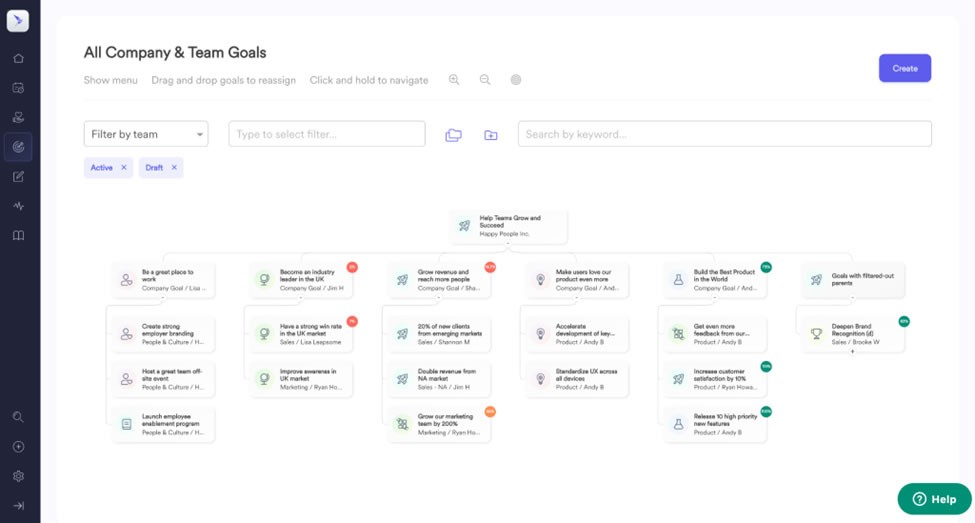Insight Blog
Agility’s perspectives on transforming the employee's experience throughout remote transformation using connected enterprise tools.
8 minutes reading time
(1677 words)
Featured
How To Successfully Lead and Manage a Remote Team
Here are our 9 expert-recommended tips to help organizations and their leadership plus management deal with the pressures and obstacles of a work-from-home framework.
To deal with the global epidemic, the majority of the world's working population began working from home. Also after COVID-19, leaders are manoeuvring the finest remote working suggestions to ensure that they can lead their teammates more effectively.
It is indeed critical to learn about remote-work guidelines, even if such policies do not proceed with the work-from-home framework. And besides, it will make future references easier.
Keeping staff members disciplined and assisting them in ensuring consistency in their efficiency is a serious hurdle. It has been noted that the majority of energetic and high-performing workers have experienced low employee morale and decreased involvement in the distant framework.
Less face-to-face supervision, social isolation, household chores, and other factors all slow down outcomes and have an impact on remote working.
As per a recent article, when your organization employs a substantial number of employees working remotely across the globe, you must use a combination of strategies to lead and manage them.
There exists multiple factors which can impact your company and staff as well as the manner in which you can overcome ongoing challenges. Ensure that you have good communication plus collaboration among your team members.
Well, to help you out here's our guide on how to lead and manage a remote team.Top 9 Tips for leading and managing remotely employed teams
Here are our 9 expert-recommended tips to help organizations and their leadership plus management deal with the pressures and obstacles of a work-from-home framework.
#1. Consider regular check-ins and frequent communication
This may appear to be excessive, but for leaders and team members who are unfamiliar with working remotely, it is critical.
Whereas email, chat, calls, and texts might have worked in the past, managers who are effective in their distant leadership pursuits are increasingly relying on videoconference to create the face-to-face communication which is now missing.
When it relates to activities, obligations, or productions, great communication makes remote working possible. Every day check-ins are an essential way to start the day.
Regular contact with the crew aids the workforce in completing all tasks. But keep in mind! Overcommunication can result in increased overhead.
You can consider using the intranet – counted among the most effective tools for communicating with remote teams.
With its ability to implement multiple communication toolkits, contemporary intranets can serve as a primary interface for any company. You can use the intranet as a medium of communication and enforce an intranet communication strategy with the right plan.
#2. Focus on end results and not just on tasks
This is universally acknowledged as a recommended practice for enhancing employee involvement and empowerment.
Clarifying the objectives and intended outcomes, then helping employees (who have the support and development to implement – this is critical) to create an implementation strategy boosts imagination and responsibility.
It is already challenging to monitor and control individuals in a virtual space. Therefore, we would suggest you to go for a full-fledged OKR goals template. Let's explain why.
Setting high-level goals may appear simple, but organizations frequently find it difficult to clearly demonstrate how employees' work contributes to the organization's purpose – especially in a remote ecosystem.
However there is a way to accomplish more targets while also creating organizational alignment. Break goals into bite-sized, manageable pieces that can filter down to all tiers and units of the organization.
That's the goal-setting model based on objectives and key results (OKRs). And an OKR goals template helps you in kickstarting your strategic planning for reaching ambitious goals.
#3. Showcase empathy and understanding
It is a positive thing if staff members share their concerns with leaders and work together to find an answer. It demonstrates that workers have enough trust and faith in their management teams to solve problems.
Paying attention to their problems and empathizing with their difficulties can assist them to relax and resolve their problems.
Furthermore, if possible, strive to become close buddies with each other. People do make decent friends at work quite often, so why should you not?
Again, everyone comes from a different family backdrop. Some will have partners, kids, and perhaps other relatives, while others may not.
Some will have an extra space for work, whereas others attend meetings and operate from their bedrooms, dining rooms, or verandas.
It's also plausible that some are functioning from a café rather than at home, and that others are experiencing internet or power outages.
Recognizing their issues and refraining from judging or trying to compare their circumstance to that of other teammates is a critical first step. This can end up making your virtual working framework simple and appealing to employees.
#4. Offer the required resources
Manpower consists of two major components. The first is adequate training, and the other one is effective and sufficient resources.
There is no denying that each community offers proper and appropriate training to its recruits and also working employees as needed.
When it relates to resources, however, hardly any of the staff bring anything from home. Assets are all available for them inside the workplace.
So, when COVID-19 hit the world and most companies began working remotely, the main issue that arose at the beginning was a lack of resources.
It's not really essential for all of your staff members to have a pc or laptop with internet access at home. It is indeed unjust if they pay associated bills from their own money.
These considerations should be kept in mind by managers in order for their virtual work framework to be effective. The organization must be ready with a roster of all required resources as well as remuneration for its employees.
Tools like Zoom, Google Hangouts, and Microsoft Teams – something that you're currently utilizing – offer simple channels for addressing the issue of resources.
We will admit that it was a little unsettling at first, however once fully implemented, it's been a wonderful way of supporting engagement strategies.
#5. Set engagement rules and expectation norms
When leaders set the bar for their team members' communication frequency, means, and optimal timing, working remotely becomes much more effective, engaging, and rewarding.
You can use video conferencing for everyday check-in conferences. However, instant messaging is more suitable when something is immediate.
Establish expectations about the perfect time of the day for members of the team to contact their supervisor and for the leader to contact each teammate. Also, ensure that colleagues are communicating information as necessary.
Again, setting expectations has always been a requirement, but it has become even more so in the current climate.
As stated previously, numerous organizations and workgroups have been forced to transition, which implies that same staff members could now be reoriented on extra duties, affecting motivation and ability — thus performance and results.
To better align, set realistic goals and obtain feedback. Don't just presume that the team knows where they require to concentrate their energy.
#6.Remove any impediments
It's important to note a few of the fresh unpredicted hurdles remote employees encounter.
These can be physical or emotional exclusion, distractions at residences pulling people in different directions, kids involved in home schools, or Amazon dialling the phone each hour.
You have the picture. Then there's the possible new challenges that the organization will face, putting undue strain on workgroups.
New silos, changes, complexities, and even fear. One of several obligations of a leader is to safeguard the group so that they can focus on their instantaneous commitments. Delete as many impediments as possible.
#7. Inspire distant social relationships
Numerous individuals did hear of or perhaps attended virtual happy hours, dinner parties, and acknowledgement meetings.
And, though they may appear compelled and insincere, research — largely based on the best practices of supervisors who have helped lead remote employees for long stretches of time — demonstrates that it actually does work.
Our advice is to avoid instituting additional Zoom conferences but instead create hours throughout already scheduled appointments for non-work-related discussions and tasks.
Then, once in a while, throw a cocktail hour or a potluck lunch.
#8. Display adaptability
Here comes the big test. Every team member comes from a unique home setting. Some have husbands or wives, as well as kids.
Some will not. Some may have private residence offices, whereas others will convene in their closets, bedrooms, or bathrooms.
Some of them may be at McDonald's. Some people may be having difficulties in their relationships.
The idea is that a supervisor must comprehend each employee's particular circumstances. Recognizing that it won't be easy is, after all, the new normal for 2022!
And yet, when we can withstand global outbreaks, social tensions, economic crashes, fires, typhoons, termites, and meteoroids, doesn't handling remote employees sound pretty simple?
#9.Concentrate on mentoring above management
#10. Monitor Progress
Workload management doesn't stop after you assign team tasks. Even if you're confident your team can handle the work, you never know what roadblocks will unexpectedly emerge. You should keep an eye on your team's progress with an hours tracking app, so you can more easily make changes in real-time when these obstacles arise.
The top leaders do much more than "control." They guide and support and coach.
They furthermore comprehend the not-so-subtle subtleties and discrepancies between management and leadership disciplines.
But because we're dealing with uncertainty, sophistication, and ambiguity does not really mean we should abandon all initiatives to advance our teammates and ourselves.
Sometimes that necessitates outside assistance, new programs, and attempting to make the time. So, get to work.
Conclusion
All of the aforementioned suggestions are easy but not straightforward. They all necessitate time, awareness, and continuity. But believe us when we say that your crew will appreciate it. The company will benefit from this.
Then you'll have a better arsenal of battle gear to help you navigate the turbulent waters of transformation. Best wishes.
Categories
Blog
(2600)
Business Management
(319)
Employee Engagement
(207)
Digital Transformation
(173)
Intranets
(119)
Growth
(118)
Remote Work
(61)
Sales
(48)
Collaboration
(37)
Culture
(29)
Project management
(29)
Customer Experience
(26)
Knowledge Management
(21)
Leadership
(20)
Comparisons
(5)
Ready to learn more? 👍
One platform to optimize, manage and track all of your teams. Your new digital workplace is a click away. 🚀
Free for 14 days, no credit card required.
















